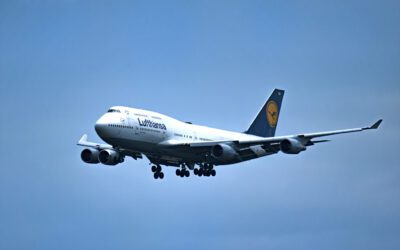I’ve been traveling constantly throughout the last month, spending time in Europe and Africa. During that time, I’ve passed through a number of airports and came in contact with airport security procedures and security officials considerably unlike those which we find in the US at TSA (Transportation Security Administration) checkpoints.
For years I’ve heard complaints about the long walks between airport gates and baggage claim, gates and ticketing/check-in, and between gates for connecting flights, at Chicago’s O’Hare, Atlanta’s Hartsfield-Jackson, Philadelphia International Airport, and others. For those who haven’t been to Germany’s Frankfurt Airport and Spain’s Adolfo Suárez Madrid–Barajas Airport, for example, and other large airports in Europe and elsewhere, I assure you, the walks in the terminals of Chicago, Atlanta, and Philadelphia are short strolls in comparison.
For example, while Madrid’s airport is gorgeous, after landing I had to walk up three ramps to get into the airport itself, then walk for about 10 minutes, including numerous moving walkways, before taking an elevator or successive escalators down several levels to an underground train to ride for about nine minutes, to then take escalators up a couple of levels to get to immigration. Then I had another walk to baggage claim, followed by a walk equal to a couple of city blocks to get to the baggage carousel.
I’d be remiss not to mention that both times after landing in Madrid this month, despite taking more than 30 minutes to get to baggage claim, I still had a wait of more than 25 minutes before the first bags from my flights appeared. I’ve never encountered that in Chicago, Atlanta or Philadelphia.
At this point, the long hikes required at some airports can’t be avoided, but it certainly should be possible to get air travelers’ baggage to the carousel in far less than 50 minutes.
Many, including me, continue to believe TSA uses over-the-top, yet ineffective security measures at airport checkpoints, including the use of full body scanners. At every airport outside the US I used in the last month, none used the MMW radiation-emitting full body scanners employed by TSA to search air travelers. Each used typical metal detectors.
Other security measures, sometimes beyond which TSA requires, were employed in the airports I used to improve x-ray scan readability. To make it easier to identify carry-on contents, TSA requires laptops be removed from most carry-ons and scanned separately. In addition to removing laptops from carry-ons and placing them in separate trays for x-ray, Spain’s security procedures require other belongings be removed from carry-on bags and placed in separate trays for scanning. I had to remove my iPad, each of my camera bodies, battery chargers, and some other camera and electronic gear from my carry-ons.
There is a profound difference between Spain’s security officers and TSA’s, which frankly made Spain’s procedures far more palatable than TSA’s.
In Spain, the officers understand they are there to serve the flying public. They embrace the idea that treating every passenger with respect engenders traveler cooperation, and speeds passenger screening. I didn’t know that Spanish security requirements were different than in the US and didn’t remove all the required items from my bags. When they x-rayed my bags, they didn’t berate me or later punish me. Instead, they helped me by talking me through the differences, handing me extra trays, and staying calm. That minimized the delay caused by my bag needing to be rescreened.
After my bags were screened, I went through the metal detector and was done. There was no extra scrutiny due to the mistake. Had TSA been in charge, based on what I’ve seen time and time again at their checkpoints, I would have been forced, at the least, to endure an enhanced patdown, and an explosive’s check as punishment for my blunder.
At the airport in Casablanca, Morocco, procedures are also considerably different than in the US. As you enter the terminal, you must immediately put all your luggage and other belongings through an x-ray machine, prior to proceeding to ticketing, security, or immigration. Each passenger’s luggage is x-rayed again before passengers are permitted to reach the gate area.
Like the security officers in Spain, those in Morocco are not confrontational. They are helpful. Like in Spain, though Morocco’s security procedures are generally more extensive than TSA’s, it’s a far better experience than in the US.
I continue to not understand why TSA permits its airport security officers to treat air travelers with an imperious, haughty attitude. That attitude makes each TSA officer’s job far more difficult than it should be. It makes air travel unnecessarily unpleasant. It increases the time it takes to pass a passenger though airport security. Their attitude makes no sense whatsoever.
I’d like to send all TSA trainers and upper level officials to Spain to remind them they exist to perform an important “service” for the traveling public, and to teach them how security officers should behave to get the job done efficiently, effectively, and with respect for those whom they serve.
After many years working in corporate America as a chemical engineer, executive and eventually CFO of a multinational manufacturer, Ned founded a tech consulting company and later restarted NSL Photography, his photography business. Before entering the corporate world, Ned worked as a Public Health Engineer for the Philadelphia Department of Public Health. As a well known corporate, travel and wildlife photographer, Ned travels the world writing about travel and photography, as well as running photography workshops, seminars and photowalks. Visit Ned’s Photography Blog and Galleries.



